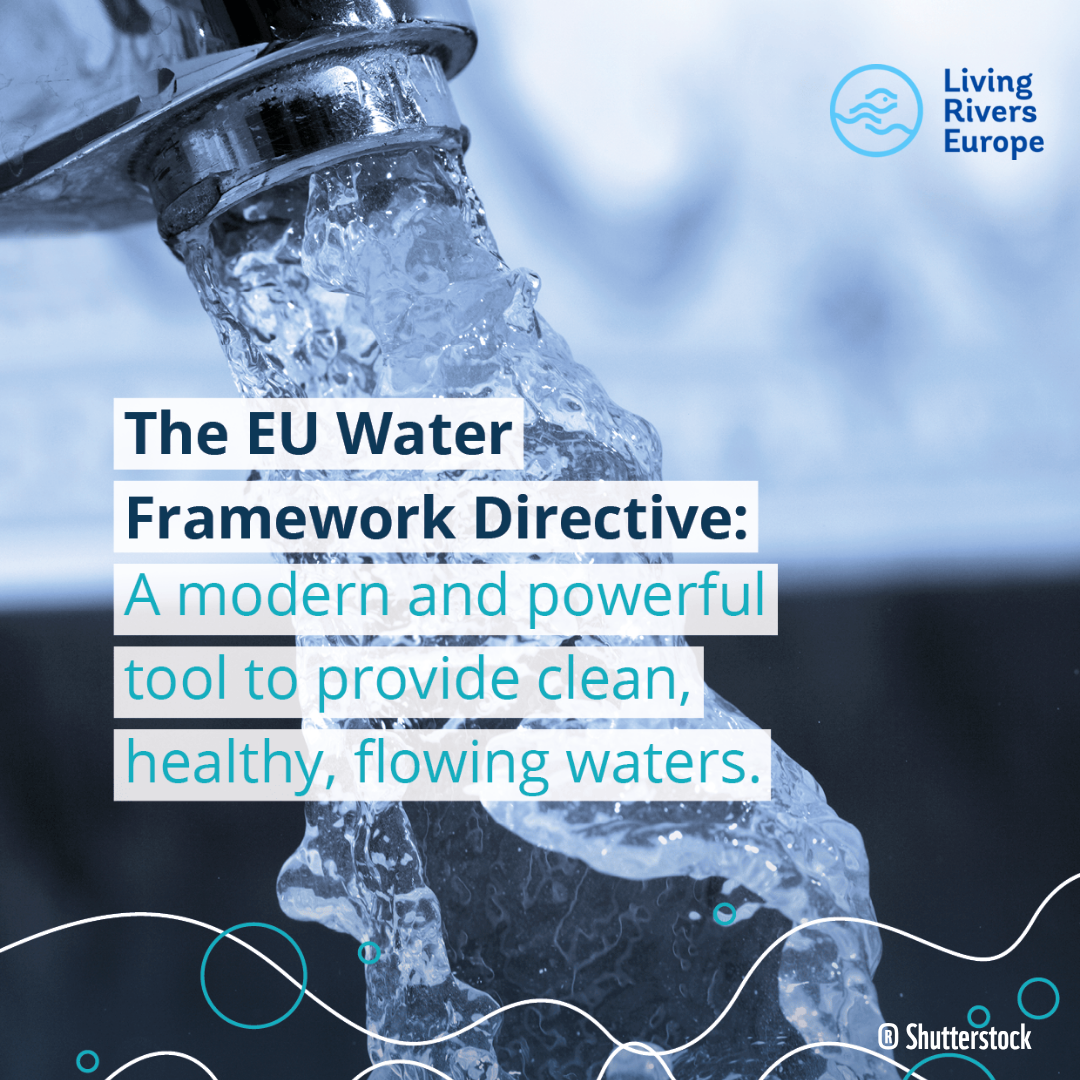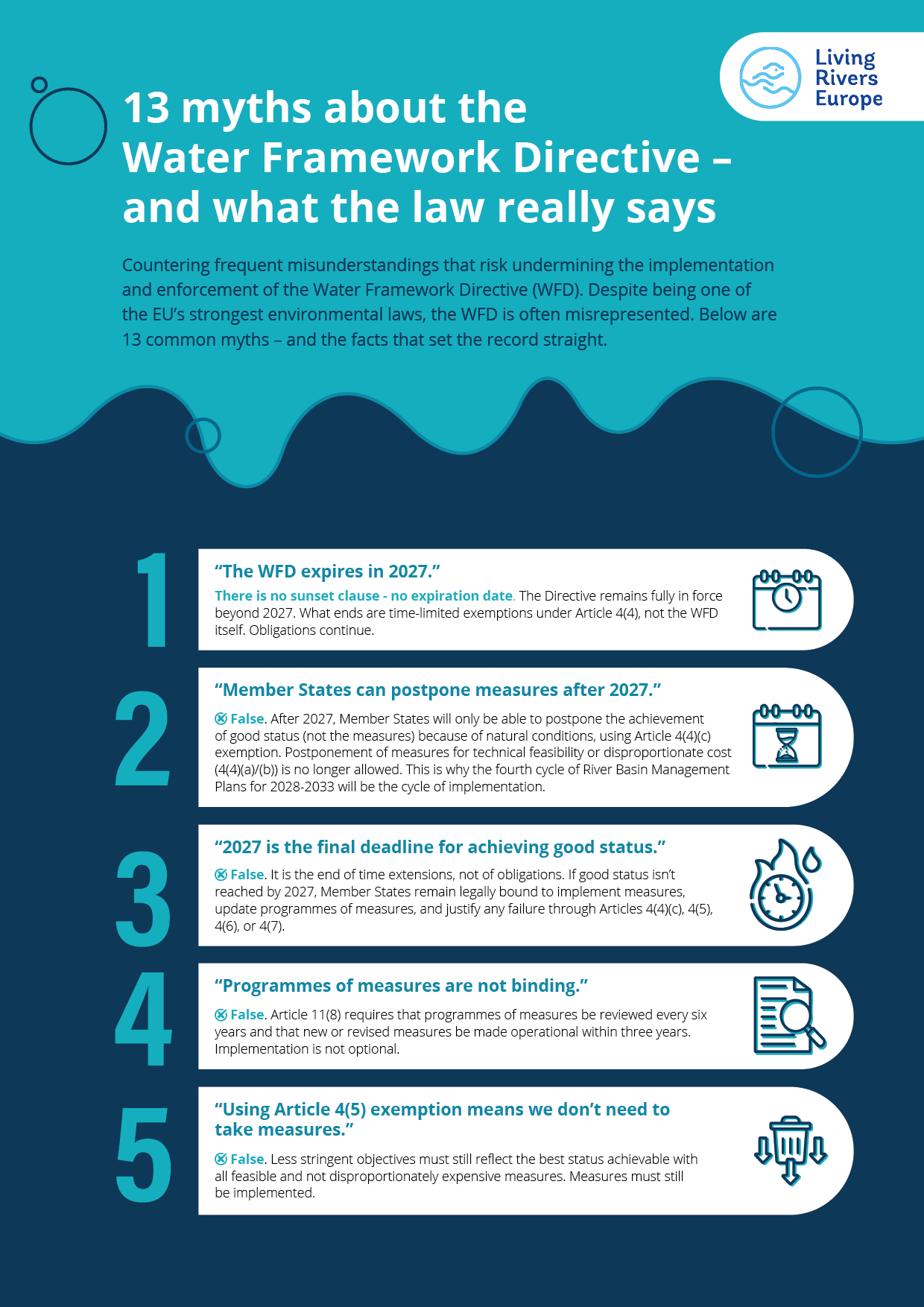EU Water Framework Directive: A modern and powerful tool to provide clean, healthy, flowing waters
This summer, the Living Rivers Europe coalition published a new report emphasising that 2027 does not mark the end of the WFD. The directive will remain fully in force beyond that date. The report explains why and how Member States must continue to comply with their fundamental legal obligations.
The Water Framework Directive (WFD), adopted in 2000, is the legal basis for freshwater protection. It requires all Member States to achieve good status for water bodies by 2027 – a target that is far from being met. Today, only 39.5% of surface waters are in good ecological condition. This weighs heavily on the state of ecosystems and their resilience to climate change.
At the same time, climate impacts, pollution and economic risks are increasing. According to the World Economic Forum, five of the top ten global business risks are now water-related.
Also identified as a cornerstone of the EU’s water resilience strategy, the coming years will be decisive. Faced with the growing water crisis in Europe, which is resulting in reduced access to drinking water, drying rivers, floods, droughts and pollution, existing European water legislation must be fully implemented.
The WFD provides the legal tools needed to address these risks: pollution control, abstraction permits, ecological flow standards, etc.
The Living Rivers Europe coalition brings together six major environmental and fishing organisations: WWF’s European network, the European Anglers Alliance, European Environmental Bureau, European Rivers Network, Wetlands International Europe, and The Nature Conservancy, representing more than 40 million people.



 ERN France
ERN France ERN is the official WWF Freshwater Partner in France and cooperates with WWF Switzerland, Austria, Netherlands and others
ERN is the official WWF Freshwater Partner in France and cooperates with WWF Switzerland, Austria, Netherlands and others

Leave a Reply
Want to join the discussion?Feel free to contribute!